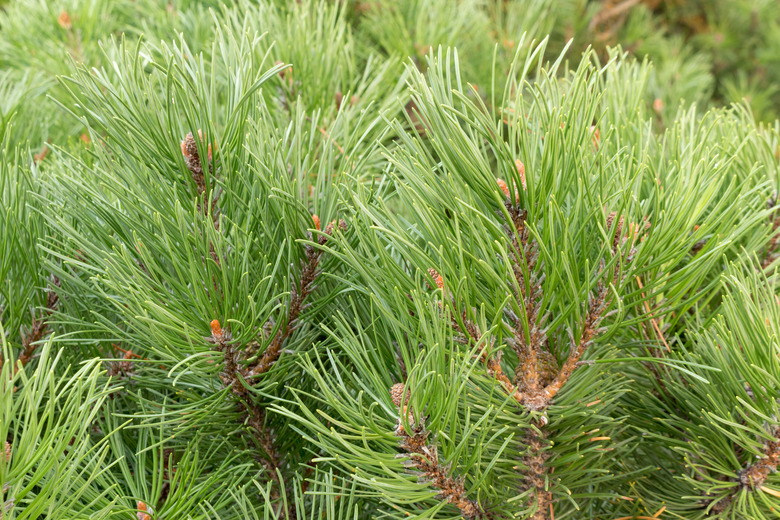How To Make Pine Trees Grow Faster
Figuring out how to make pine trees (Pinus spp.) grow faster requires looking at the growing conditions and care. Like all other plants, a pine tree has specific habitat requirements. Factors such as soil nutrient levels, available sunlight and soil pH can positively or negatively influence its growth. If your pine appears to be faring poorly, a number of variables could be slowing its growth or impacting the tree's overall health. Fortunately, most of these problems can be overcome using simple equipment readily available at many nurseries and garden centers.
How to Make Pine Trees Grow Faster
1. Test Soil for Nutrients
Collect a small amount of soil from where the tree is growing. Take a soil sample to your local cooperative extension service or use your own soil test kit to determine the levels of macronutrients, such as nitrogen, phosphorus and potassium, that the sample contains. Based upon the test results, acquire and apply fertilizer to increase any deficiencies. As an example, if the soil lacks nitrogen, an application of fertilizer such as 10-0-0 will provide the tree with the needed nutrition.
2. Examine Pine Tree Needles
Examine the condition of the needles. If all have yellowed, it's a sign that your tree is suffering from iron chlorosis, which happens due to a lack of chlorophyll. Poor growing conditions can cause chlorosis, including alkaline soil, improper drainage and compacted soil. Correcting those issues can help remedy the issue long term. For a short-term solution, acquire iron chelates and surface-apply the product based upon the manufacturer's instructions.
3. Test Soil pH Levels
Test the pH level of the soil using your pH probe and adjust soil pH as needed. For an eastern white pine (Pinus strobus, USDA hardiness zones 3-8), for example, the optimal soil pH level should be acidic, 6.0 or less. If the pH level is well above 7.0, the soil is too alkaline. Acquire a quantity of garden sulfur and surface apply it to the soil around the tree. If the pH level is significantly below the optimal range, your soil is too acidic. A surface application of dolomitic lime will sweeten the soil back to the proper pH level.
4. Examine the Soil
Examine the soil for signs of excessive dryness. A white pine grows best on moist soil. If the limbs appear droopy, water the tree thoroughly and establish a regular schedule for watering it on an ongoing basis.
5. Look for Problems
Inspect the area around the tree. If it's shaded by the limbs of other trees or growing among tall weeds, your tree lacks adequate sunlight. Remove the tree limbs creating the shadows and carefully mow or pull the weeds or other vegetation. Don't apply weed killer or herbicides. Your tree is already under stress, and these chemicals can kill it.
6. Prune Only When Needed
Remove diseased, broken or pest-infested branches from your pine tree to encourage healthier growth. Pruning in late winter during the dormant season is best, but you can prune at the time you see a problem to prevent additional damage. Pruning the new candles or shoots in the spring can encourage bushier growth in your pine tree if you want it to look fuller. Use hand pruners to trim the candles about halfway to encourage new growth.
7. Observe Tree Growth Changes
Wait a few weeks and observe any changes in the tree's growth habits. If the green color begins reappearing in the needles, new growth commences or the droopiness of the limbs has disappeared, your efforts have succeeded.
